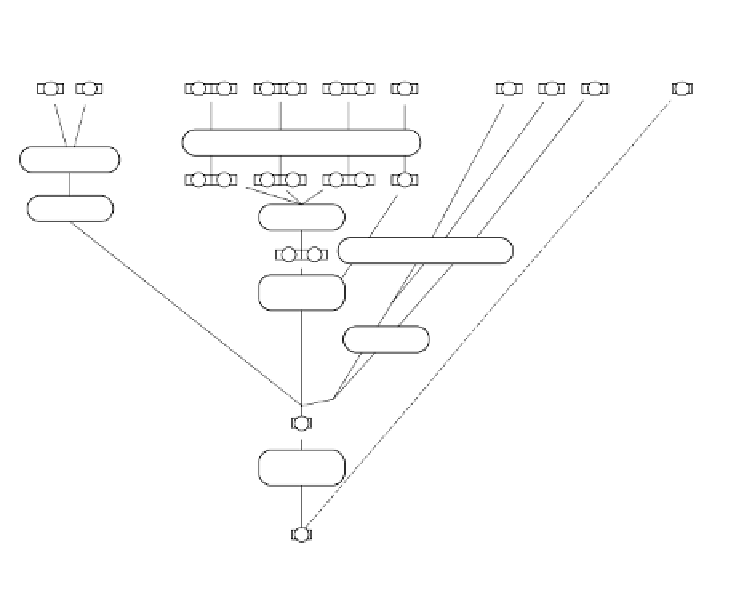Biology Reference
In-Depth Information
Universal stress protein UspA of
E. coli
is homologous to the MADS-box
transcription regulators of eukaryotes (Mushegian and Koonin, 1996) whilst the
FUS6 family of eukaryotic proteins contains a putative DNA-binding domain
related to bacterial helix-turn-helix transcription regulators (Mushegian and
Koonin, 1996). Other human genes with homologues in
E. coli
are the Y-box
family (
YB1
; 1p34) which encode nucleic acid-binding proteins which serve as
transcriptional repressors in humans and the cold shock response in bacteria
(Wolffe
et al
., 1992; Wolffe, 1994), the
SIR2L
gene family which are involved in
cell cycle progression and chromosome stability and chromatin silencing
(Brachmann
et al
., 1995),
CYP51
(7q21), the most conserved member of the P450
monooxygenase family involved in the demethylation of sterol precursors
(Yoshida
et al
., 1997), the
MLH1
(3p21),
MSH2
(2p21-p22),
GTBP
(2p16),
PMS1
(2p31-q33) and
PMS2
(7p22) mismatch repair genes (Fishel
et al
., 1993;
Kolodner, 1996), the
RAD51A
(15q15) DNA repair protein gene homologous to
the RecA protein of
E. coli
(Brendel
et al
., 1997), and
HES1
(21q22.3) with
homology to the
cross-reacting protein 27A of
E. coli
(Scott
et al
., 1997). A con-
siderable degree of homology has also been noted between prokaryotic and
eukaryotic RNA polymerases (Iwabe
et al
., 1991; Klenk
et al
., 1992; Sweetser
et
al
., 1987), prokaryotic
factors and eukaryotic transcription factors TBP
(TFIIB) and TFIIE (Malik
et al
., 1991; Ohkuma
et al
., 1991; Rowlands
et al
.,
1994; Sumimoto
et al
., 1991), eukaryotic translation initiation factors eIF-1A and
eIF-5A and their prokaryotic counterparts (Hashimoto and Hasegawa, 1996;
Plants
Vertebrates
Yeast
Bacteria
Specific
hexokinases
12
A
B
C
D
I
P
II
GK
Inactive
Inactive
Point mutations
Point mutations
Duplication
Duplications
Duplicated
100kDa
hexokinase
Point mutations
Duplication
and fusion
?
Duplications
Ancestral
50 kDa
hexokinase
Duplication
and fusion
Primitive
25kDa
hexokinase
Active site
Figure 4.1.
A proposed phylogeny for the hexokinases (Cardenas
et al
., 1998).



















